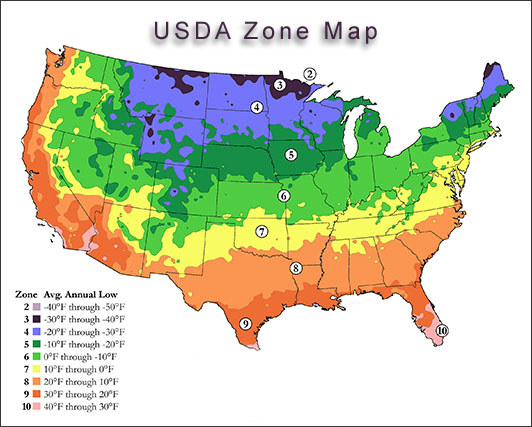

I know Sunset zones are more helpful for gardeners in the West because they use many more factors (i.e. elevation) than just minimum winter temperatures (which is how we gardeners in the East get our zones). But I wonder if my sunset zone is more useful. In Connecticut, I am in USDA Hardiness Zone 6. My Sunset Zone is 34. Here is the description:
-
ZONE 34. Lowlands and Coast from Gettysburg to North of Boston
Growing season: late April to late Oct. Ample rainfall and humid summers are the norm. Winters are variable–typically fairly mild (around 20 degrees F/-7 degrees C), but with lows down to -3 degrees to -22 degrees F/-19 degrees to -30 degrees C if arctic air swoops in.
It sounds accurate, but when I read from the Sunset Northeastern Garden Book, it says: “This happy clime has predictable and temperate seasons with generous precipitation year-round.” I want to take issue with that, but I suppose it is true compared to other regions.
A few questions:
- Will following Sunset zones help me in any way?
- I have lived in Philadelphia, and I know they grow stuff I can’t — or have I been taught to think that by a USDA conspiracy?
- Why is there no Zone 33? Is it the USDA conspiracy at work again?
- Why doesn’t the USDA want us to know about Zone 33? What happens there?
- Will I actually remember to try to use this system next spring?
- How will nursery staff react when I ask them if a plant will grow in Sunset Zone 34?
- Will I be arrested if I ask them if a plant will grow in Zone 33?
- Has an FBI file been opened up already just because I wrote this blog?
If I am suddenly arrested on strange charges (smuggling illegal Swedish immigrants into the country so they can buy Hannah Montana merchandise, for example) or if I am “disappeared” please alert the media — and by that I mean the gardening blogosphere — and start looking for me in Zone 33.
















Comments
I just moved to my first house where I can plant what I want so I am researching like crazy. I have learned that I am in sunset zone 33 (North-Central Texas and Oklahoma Eastward to the Appalachian Foothills). I found this info from http://www.sunset.com. I don't know how much help the Sunset zones will be. I have been using the Lowes' Learn2grow website which doesn't seam to utilize the sunset zones past zone 24. That may be where the conspiracy truly is.
Most of the things I have read say that since the USDA has been around longer makes them the standard, but they are starting to use the AHS heat zone map that lets you know how hot the plants can get instead of how cold. (Helpful for us southerners.)
I think any nursery staff that doesn't know what Sunset zone 34 is, may be the lost pharmacy employee that you have just discovered because he sure doesn't belong there.
I'm sure the FBI hasn't opened a file on you for this, it's probably the NSA. I'll alert the media for you.
haha, there is a zone 33 now. Down south.
ZONE 33. North-Central Texas and Oklahoma Eastward to the Appalachian Foothills
Growing
season: mid-April through Oct. Warm Gulf Coast air and colder
continental/arctic fronts both play a role; their unpredictable
interplay results in a wide range in annual rainfall (22" to 52") and
winter lows (20 degrees to 0 degrees F/-7 degrees to -18 degrees C).
Summers are muggy and warm to hot.
Log in or create an account to post a comment.
Sign up Log in